Lice & Worms
WHAT ARE LICE AND WORMS?
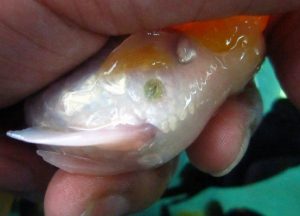 Lice and worms are quite common parasites in tank. Both of them rely on goldfish to thrive and reproduce which can potentially lead to health problem in your fish. Lice can usually reach up to 5mm in diameter and you can see them quite well without using a microscope. Don’t mistake them with algae or dirt. While worms, Anchor worms can be seen with naked eye on the fish body, while tapeworms are internal parasites, you may also see live or dead tapeworms in your fish’s stools, or hanging from the anus of the fish.
Lice and worms are quite common parasites in tank. Both of them rely on goldfish to thrive and reproduce which can potentially lead to health problem in your fish. Lice can usually reach up to 5mm in diameter and you can see them quite well without using a microscope. Don’t mistake them with algae or dirt. While worms, Anchor worms can be seen with naked eye on the fish body, while tapeworms are internal parasites, you may also see live or dead tapeworms in your fish’s stools, or hanging from the anus of the fish.
THE CAUSE
- Introducing new fish or water that held new fish may bring the parasite to your tank. Thus, quarantine new fish before putting them in your tank is crucial
- plants gathered from the wild that haven’t been sterilized are sometimes the culprit too.
SYMPTOMS
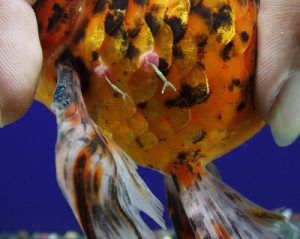 Lice and worms are both visible and can lead to serious health issue in your goldfish. Thus, identifying them is important before action taken. you may find the following symptom in your tank:
Lice and worms are both visible and can lead to serious health issue in your goldfish. Thus, identifying them is important before action taken. you may find the following symptom in your tank:
- moving disc shaped lice visibly on the body of your goldfish.
- They will look like grey-green or brownish slightly raised spots on the fish. You can also see the louses eye spots if you look more closely.
- Fish appearing irritated and stressed and even attempt to break the water to gain some relief . This may indicate to lice infestation even you can see it with naked eye.
- Anchor worms are often be visible on your fish, hanging from the head, flanks or fins.Tapeworms are an internal parasite, which will usually be apparent in your fish due to a fast loss of weight and condition.
- Red sores that look like boils may also appear on the body of your fish.
TREATMENT
There are a broad-spectrum anti-parasitic medications that you can add to the goldfish tank in order to eradicate parasites such as worms and lice, and these are usually highly effective, although they may require more than one treatment.
Dipterex (Dylox neguvon) is effective in combating lice and worms.It is an insecticide that is soluble in water, comes in liquid or powder form and comes in different potencies ranging from 40 to 98%.
In the case of anchor worms, you may need to physically remove visible worms from the body of your fish using a pair of tweezers in order to give them the best chance of recovery.
If your tank has played host to either lice or worms, it is important to treat the main tank itself, Sterilize the tank completely (including plants) to kill any adults or nauplii of the lice and worms even if the remaining fish after you have removed any sick ones are not showing any signs of illness.
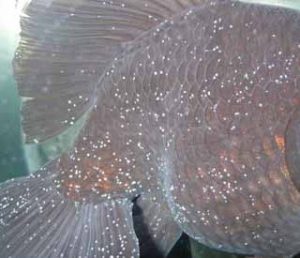 WHAT IS ICH a.k.a WHITE SPOT?
WHAT IS ICH a.k.a WHITE SPOT?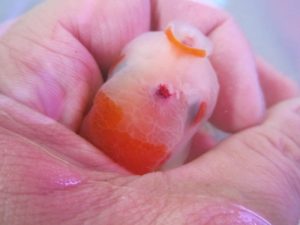
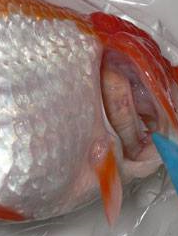 WHAT IS FLUKES?
WHAT IS FLUKES?